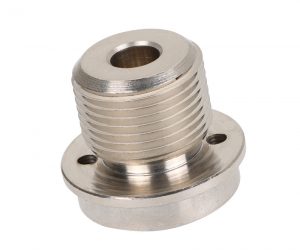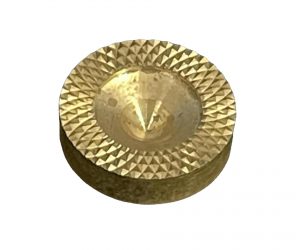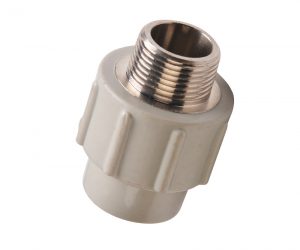To stay competitive and increase profitability, companies need to reduce mold procurement costs. Here are some effective cost-saving strategies:
- Get multiple quotes: Request quotes from multiple mold manufacturers. This allows you to compare prices and negotiate better deals based on market conditions and supplier competitiveness.
- Build long-term partnerships: Build long-term partnerships with reliable mold manufacturers. Strong relationships can result in volume discounts and preferred treatment, which can save costs.
- Design optimization: Work closely with mold designers to optimize mold design. A well-optimized design can reduce material waste, processing time, and overall production costs.
- Select materials: Choose cost-effective mold materials without sacrificing quality. Sometimes, alternative materials can save costs without affecting performance.
- In-house production: Consider producing molds in-house if feasible. Having an in-house tooling department can save on outsourcing costs and speed up production.
- Standardization: Use standardized mold components whenever possible. Standardized components reduce manufacturing complexity and may save component costs.
- Leverage existing molds: Reuse existing molds for similar parts or products whenever possible. This avoids the need for new tooling, significantly reducing costs.
- Early Supplier Involvement: Involve mold suppliers early in the design process. Their expertise can help identify potential cost-saving opportunities and optimize mold production.
- Lean Manufacturing: Implement lean manufacturing principles to minimize waste, optimize processes, and improve overall efficiency.
- Quality Assurance: Invest in quality assurance and testing to identify and resolve potential defects early. Avoiding expensive rework and post-production fixes can result in significant cost savings.
- Continuous Improvement: Encourage a culture of continuous improvement to identify and implement cost-saving opportunities in the mold procurement process.
- Negotiation: Negotiate with mold manufacturers to obtain the best terms, including payment schedules, delivery times, and pricing.
- Value Engineering: Explore value engineering options to achieve the same functionality at a lower cost. This involves reevaluating the design and manufacturing process to optimize costs without sacrificing quality.
By implementing these strategies, companies can effectively reduce mold procurement costs while maintaining or even improving the quality of the molds produced. Continuous cost-saving measures can enhance a company's competitive advantage and long-term financial performance.
To keep costs in check, it's important to first get a sense of how many new products we expect to sell from the marketing team. Are we looking at a big number?
When we're working on and reviewing new products, if we don't think we'll need more than 500,000 units, it might be smarter to skip hardening the molds and go straight for soft ones. These soft molds are often called test molds and they don't cost as much as the hard ones.
Soft molds are made of flexible material that can easily adjust to different product shapes and sizes. They're quicker and cheaper to make than hard molds, saving both time and money. Plus, they're more adaptable and can be tweaked over and over again.
If the market doesn't react well to our product, using soft molds helps us avoid wasting money on unnecessary mold making. Since they're less expensive, if our orders fall short of expectations, we can just keep using them without spending extra on hardening. This way, we dodge the high costs of making hard molds when sales are low.
Also, soft molds are great for doing initial tests and checks on our products. By producing small batches with them, we can see how good the quality is and what people think. If we spot any issues or if the product isn't what the market wants, we can fix things up fast without having to pay for new molds.
In summary, during the development and review phases of new products, if we're not expecting to sell more than 500,000 units, it makes sense to use soft molds. They're cheaper, more flexible, help save on unnecessary mold costs, and are perfect for early testing. This approach can lower risks and costs for the business and boost our product's competitive edge.
If the market for your product really picks up and there's a big demand, you can easily start using the second set of hard molds while the first set is still in use. This won't hold up production or delivery at all. Plus, the mold factory learns a lot from making the first set of molds. When they make the second set, they can do even better because of that experience. Trust me, they'll want to do this on their own because it makes things smoother for them and gives you a top-notch duplicate mold.
On the flip side, if you don't know how many products you'll need and you start with hard molds right from the get-go, you could end up spending at least an extra third on mold costs unnecessarily. And remember, mold costs should be thought about during the design phase too. For instance, using S136 steel for the mold core and a fine nozzle mold embryo for feeding can drive up costs. Of course, if your product needs are high-end or a customer insists on specific materials and processes, that's a different story.
Getting molds can be a big expense for companies that need them for production. But there are smart ways to cut costs without sacrificing quality. Let's talk about some effective strategies to save money on mold procurement.
- Conduct a Thorough Market Analysis
One of the most effective ways to reduce the cost of mold procurement is to conduct a thorough market analysis. By researching different mold suppliers, companies can compare prices, production capabilities, and quality control measures. This research can help companies identify the most cost-effective supplier that meets their quality standards.
- Optimize Mold Design
Another way to reduce the cost of mold procurement is to optimize the mold design. Companies can work with their mold suppliers to design molds that use fewer materials, have simplified designs, and require fewer parts. This optimization can lead to cost savings in the long run and increase the efficiency of the production process.
- Consider Alternative Mold Materials
Companies can also consider alternative mold materials to reduce the cost of mold procurement. For example, instead of using expensive metals like steel, companies can opt for lower-cost materials like aluminum or composite materials. These materials are often cheaper, lighter, and easier to work with than traditional metals, leading to cost savings.
- Standardize Mold Components
Another strategy to reduce the cost of mold procurement is to standardize mold components. By standardizing components across different molds, companies can reduce the number of unique parts required and streamline the production process. This standardization can lead to cost savings and increase efficiency.
- Collaborate with Mold Suppliers
Finally, companies can collaborate with their mold suppliers to reduce the cost of procurement. By working together, companies and suppliers can identify cost-saving opportunities, optimize the production process, and reduce waste. This collaboration can lead to long-term cost savings and a more efficient production process.
Companies can reduce the cost of purchasing molds by thoroughly researching the market, optimizing mold design, considering alternative mold materials, standardizing mold components, and working with mold suppliers. By taking these approaches, companies can save money without sacrificing quality and increase the efficiency of the production process.


